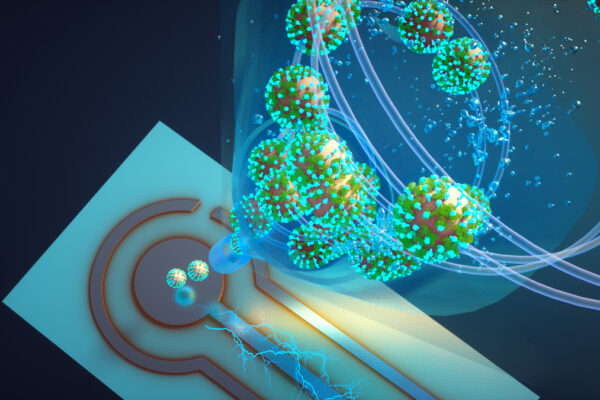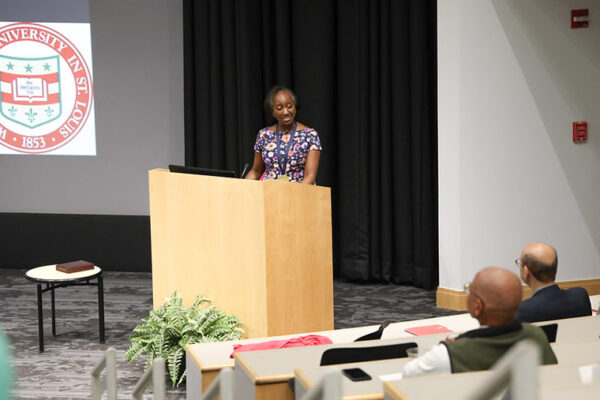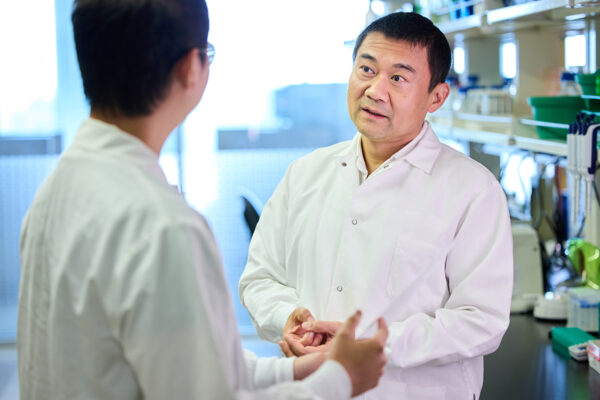Air monitor can detect COVID-19 virus variants in about 5 minutes
Proof-of-concept device could also monitor for flu, RSV, other respiratory viruses.
Njoku installed as Wise Chair in Pediatric Anesthesiology
Dolores B. Njoku, MD, the director of pediatric anesthesiology at the School of Medicine and anesthesiologist-in-chief at St. Louis Children’s Hospital, has been installed as the new Rudolph L. and Mary Frances Wise Endowed Chair in Pediatric Anesthesiology.
In battling obesity and prediabetes, combining exercise with weight loss is key
Researchers at the School of Medicine have found that combining regular exercise with a 10% loss of body weight more than doubles sensitivity to insulin, offering important health benefits.
Bias from pulse oximeters remains even if corrected by race, study finds
Neal Patwari and graduate students Francesca Bonetta-Misteli and Di Huang at the McKelvey School of Engineering found that even while pulse oximeters have been adjusted to account for darker skin tones, bias remains and must be fixed.
Gordon wins Spain’s Asturias Award
Microbiome pioneer Jeffrey I. Gordon, MD, at the School of Medicine, has won the 2023 Princess of Asturias Award for Technical and Scientific Research.
Wang, nationally recognized geneticist, named head of genetics
Ting Wang, a national leader in genetics and genomics who has led groundbreaking studies in how the genome is regulated, has been named head of the Department of Genetics at the School of Medicine. A computational biologist, he will begin his new role Aug. 1.
Martin to lead pediatric surgery division
Colin A. Martin, MD, a specialist in intestinal rehabilitation surgery and an advocate for diversity, equity and inclusion in surgery, has been named director of the Division of Pediatric Surgery in the Department of Surgery at the School of Medicine.
Diagnosis of rare, genetic muscle disease improved by new approach
Researchers at the School of Medicine have developed an approach that could help doctors distinguish between the many subtypes of limb girdle muscular dystrophy, a rare, genetic muscle disease. With new therapies poised to enter the clinic, identifying the precise subtype is necessary to ensure access to the most appropriate treatment.
Tick-borne Bourbon virus infects people, wildlife in St. Louis area
Ecologist Solny Adalsteinsson, at the Tyson Research Center, and virologist Jacco Boon, at the School of Medicine, are part of a One Health team studying how tick-borne Bourbon virus spreads through the environment, wildlife and people.
Maternal vitamin D deficiency increases lifetime diabetes risk in offspring
Researchers at the School of Medicine have identified a process in immune cells that links vitamin D deficiency during pregnancy to an increased risk of Type 2 diabetes in offspring.
Older Stories









